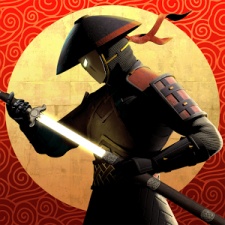Nekki founder Dmitry Terekhin and director of business development Nikita Korzhavin discuss the key development stages of Shadow Fight 3, a 3D fighting mobile title that went on to receive a nomination at the Mobile Games Awards 2018.
Before starting the project
After the great success of Shadow Fight 2, which racked up more than 250 million installs around the world, we immediately started thinking about a new project.
We had a number of different ideas, for example, to make a nice cyberpunk samurai slasher. But in the end it was clear that a continuation of SF was the best bet.
Players had fought through the second part and they were waiting for the story to be continued. In addition, observing the market we realised that with increasing promotion expenses, brand recognition is one of the most important issues.
Therefore, we felt it was much less risky to release a new sequel compared to creating a new brand from scratch.
Trends
So, we decided to make Shadow Fight 3, and then we saw another trend in the market: with the capacity of devices increasing, more and more games were released in 3D.
This was really good for us, because when we entered the industry more than 10 years ago we were already dreaming about creating 3D games. In addition, SF2 and the fighting silhouettes – all of their animation is already calculated in 3D.
However, apart from that, we did not have a lot of experience in creating 3D games, so we faced a very complex and unpredictable challenge.
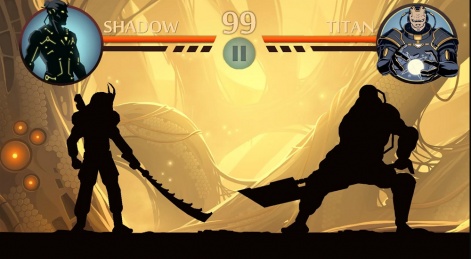
When we launched Shadow Fight 2, there weren't many mobile fighting games yet, and mostly just mobile versions of old console games.
But after that the competition increased dramatically and games such as Mortal Kombat X, Marvel: Contest of Champions and Injustice 2 appeared.
These games set a high standard in graphics, but they maintained the classical control scheme: the player must tap and slide around the screen, but we feel the choice of actions is limited and for us this type of control isn’t too interesting.
For us, fighting means the freedom to fight as you want; so we have kept the classic control of stick and buttons.
But one change was inevitable. For the transition to 3D we had to give up the black silhouettes for the fighters that we had previously used.
We were perfectly aware that this decision might shock the fans of the series and would lead to many questions. Without shadows the game would lose its style, which was its main feature.
To prevent this, we developed the most important part of the game: the so-called “shadow regime”. When a player accumulates energy, the location is obscured, and the character takes the shape of the shadow.
The team
At the beginning of our journey, fan feedback was still far away. We needed to develop expertise in 3D animation and train specialists. When we did Shadow Fight 2, almost half of the staff were trainees - back then we actively developed a program to attract young talent.
And we are happy that it was such a success. By the time we started working on SF3 we had a lot of cool professionals and skilled people. Now they faced the challenge of taking the next step in their careers.
Initially, only a few people worked on the prototype of Shadow Fight 3. Step by step, that number increased as people switched from SF2 and other projects to the game, as well as new staff hires.
Today, the SF3 game project employs more than 70 people, divided into approximately 10 teams. For comparison: Shadow Fight 2 was developed by 30 to 40 people.
A new faith in Scrum
With the growing number of people on the project, the approach of how to manage it also changed. To better cope, we decided to implement the Scrum methodology.
Before, we already thought that we were working by the Scrum method, but actually it was pseudo-Scrum, more of a cargo-cult.
We used those parts of the technique that we understood, and the rest was thrown away or simply died off with time. It's clear why there is so much criticism about Scrum – they simply “do not know how to cook it”.
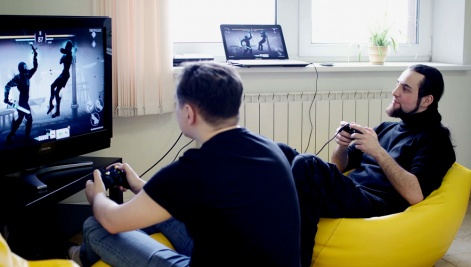
This time we wanted to do it right. First, we looked for the right literature and figured out the methodology, understanding why we need certain procedures and rituals. Then we sent several of our managers to Munich for the training with Jeff Sutherland, one of the creators of Scrum.
This was a turning point: The staff went to the training full of skepticism, but upon return began to convert others to a new faith. Later, we sent people to this training again and came prepared with questions for Jeff.
For example, one of the issues was the work on the Scrum process for artists and animators. Scrum advises the scheduling of tasks for each sprint and assessing their timing.
With technical tasks that have formal requirements, everything is clear. But in the case of an image, for example, this is impossible: you cannot predict in advance how many steps it will take to make it look beautiful.
For this particular question, Jeff advised us to break the problem into stages. The first sprint includes the task of creating the first draft of the image for formal requirements. After its completion, the correction phase begins. The requirements for corrections are defined and a new task is set up. This is repeated until the desired level of quality is achieved.
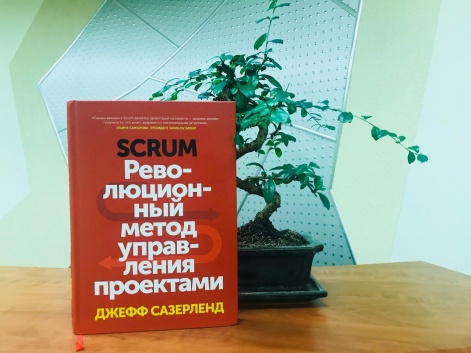
Over time, we modified the Scrum concept by adapting it to suit our specific needs. Scrum allows and even encourages customisation and flexibility.
For example, different teams tried different instruments and different approaches. Some were Scrum hardliners and some were softer. In one team there was a fixed Scrum master while in another the master changed every week.
As a result, the best solutions were exchanged among the teams and became part of the overall system.
Going 3D
During the development process, the main challenge for us was 3D. We needed to create cool characters, locations, weapons, armour and effects, and somehow squeeze it all into a phone while considering a wide range of supported devices. In the end, we think we made it happen.
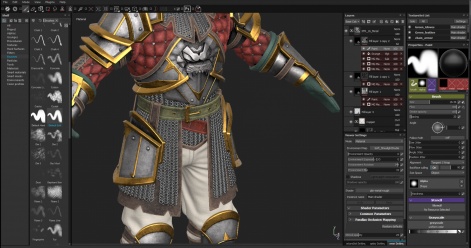
The first iterations of 3D graphics left much to be desired. We did everything we could but the results were no good; the graphics looked cartoonish and the characters of different factions were difficult to distinguish.
We had to turn to external consultants for help. Thanks to them, we gained a much clearer understanding of a lot of things and as a result we then had a guideline, and with it the work on graphic content got much more organised.
We defined the silhouettes of the characters for each of the three factions, their individual colour scheme and visual style, so that you could clearly tell who was who at first glance.

In addition to standardising the characters and locations, work was underway to improve the graphics.
Gradually we managed to get away from cartoonishness and made the images more realistic. The first models of the characters and locations had to be redeveloped and the artists set up the “cemetery of discarded models” on one of the walls in our office.
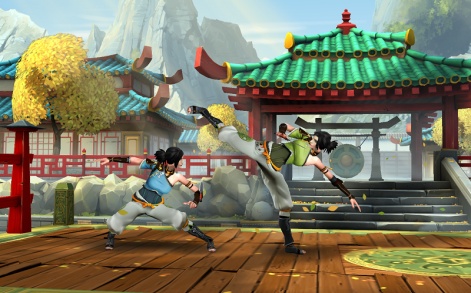
We had promised the players to release SF3 in fall 2016, but because of all the changes we were making, we couldn’t meet the timing at all. We had to postpone the launch and eventually the game wasn’t released until one year later. But we believe that the result fully justifies the delay.
Cinematics
To introduce the plot and present the three factions, we decided to make an intro movie for the game. We already had some experience with creating cool intros for Shadow Fight 2 and Vector, but these were two-dimensional games. For SF3, something more sophisticated was needed.
It was of course clear that a full-fledged 3D cinematic piece is a very time-consuming and expensive project, but it was also our dream. We had long wanted to try our skills on such a project and now there was the opportunity. Therefore, we decided to create our own CG department.
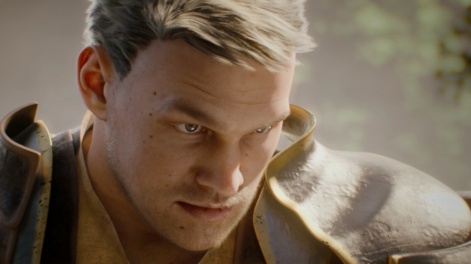
We set up a small CG team, came up with a plot for the video and developed a rough storyboard. Several specialists were in the office on a full-time basis and additional staff also worked remotely or on a temporary basis.
The story is built around representatives of the game's three factions: Legion, Dynasty and Heralds. They come to a destroyed temple to take possession of the artifact – the sphere in which the shadow essence is enclosed. They get into a fight, during which the sphere is broken and the shadow energy bursts out.
The clip then suggests three alternative endings. What exactly will happen depends on the actions of the player thoughout the game, however.
Work on the video was not easy and took us about two years. But in the end we are really happy with the result, we gained invaluable experience from it and had a lot of fun.
We hope that the movie will be a beautiful “peacock tail” for the game and will support the development of marketing and promotional materials.
Animation
One of the goals when creating the video was to use Cascadeur, our in-house developed animation tool.
We used this technology to create realistic animations for all the games in the Shadow Fight and Vector series, and so we wanted to use it for the SF3 animation as well.
Animations have always been our main feature and pride. With Cascadeur, we do animations manually without using motion capture and are still able to create smooth and physically correct movement.
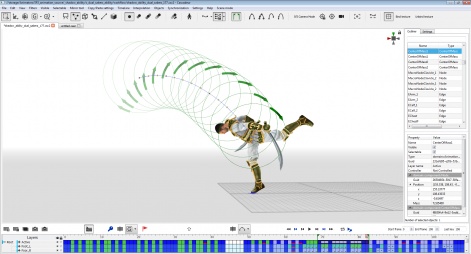
Of course, technology alone is not everything. We think what is most important for animators is what we call the "inner eye”. After watching hundreds of films about martial arts and a lot of fighting scenes, the animator develops an intuition to tell what posture and movement will look spectacular.
Preparing for launch
In early 2017, it was time to think about marketing. When launching Shadow Fight 2 we did not invest in advertising at all, the game simply became popular by word of mouth.
We believed that SF3 had no less potential for going viral, especially as the strength of the brand has grown significantly over the years. However, the competition for the attention of users has multiplied as well so we started to think about what else we could do to make the launch a success.
First, we took up revitalisation of our social networks. The Shadow Fight groups on Facebook and VKontakte had more than six million subscribers, but our activities were basically limited to announcing in-game events and answering the question: “When will you release SF3?”.
From the beginning of 2017, we began to regularly post information about the new game's characters, weapons, armour, factions and the different fighting styles, as well as organising contests.
Recently, we also started to conduct trial streams and in general they heated the audience’s interest in our new project.
For the interaction with the communities we decided not to hire special staff but to use our own people first, our game designers and script writers. That is, people who participate in the development of the project and who know it inside out. That way we ensured that we were talking to the community in a language they understand.
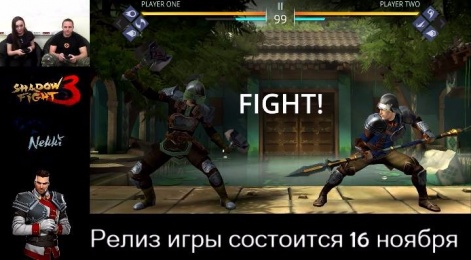
Millions of views
In addition to our social networking activities, we turned to video content. It’s no secret that reviews and streams are a trend today and one of the most powerful channels for promotion.
First, we posted a short teaser on YouTube, then the full cinematics, the gameplay video and finally the trailer of the game.
The cinematics attracted the most attention. At the time of writing it had been watched 5.5 million times already only on our channel. Bloggers and fans of the game picked up the video to share and review it.
We got the message that there is a great potential in video, so we started working with influencers. For Shadow Fight 2, a huge amount of video content was created on YouTube by fans. There are videos that got more than 10 million views, but we still did not use the platform.
Working with YouTube
At the beginning of the summer before the soft launch of the game we reached out to bloggers and offered them to be the first to review it.
Despite the fact that we did not offer any money, many - even bloggers with over a million followers - agreed to cover it. And it paid off, the first review got more than 2.5 million views and became the most popular video for this particular influencer in a long time.
We all agreed that the experiment of working with influencers was a success and decided to scale up this experience. We assembled a small team to work with YouTube, developed a plan for pre-release communication and began to provide bloggers with new content and builds for review regularly.
Participating in exhibitions
In addition, the team working with influencers became a key link when preparing for Gamescom and the Igromir expo. It was the first time we exhibited at the shows and for both events we worked with the press and YouTubers.
At Gamescom our booth was in the closed business area and we had a lot of successful meetings with partners and the press which got us mentioned in various publications and videos.
Website and press kit
After the exhibitions we began to work hard on the content we wanted to use immediately before the release, such as the promo site. Before the release, it served as a business card site with a clip and the release date of SF3.
We later redesigned it and added more information about the new game: video content, screenshots, images, animated gifs and a press kit – everything is available for download.
We hope that the content will help the press and bloggers better understand the story of Shadow Fight, understand the differences between the factions and why they exist. In addition, influencers can design their material and videos using our official content.
Secondly, we created a launch trailer explaining the main features of the third part. With the trailer, fans of the original game can get a quick overview of all the changes in SF3 compared to SF2.
Finishing line
The development of the project took more than two years. In addition to the lack of experience, the main difficulty for us was the lack of time. The project was too big and our quality requirements were constantly growing.
As a result, we first extended the development period and postponed the release date by one year, and then the soft launch turned out pretty rough.
We soft-launched in Canada in summer 2017 and immediately realised that a lot needed to be redone. But to continue and feed players with tiny bits without giving an exact date was already impossible.
Therefore, we went all in and announced that we would release the game on November 16th 2017, to make it exactly one year. It was very risky considering the changes we implemented. For example, in just a few months we almost completely changed the user interface.
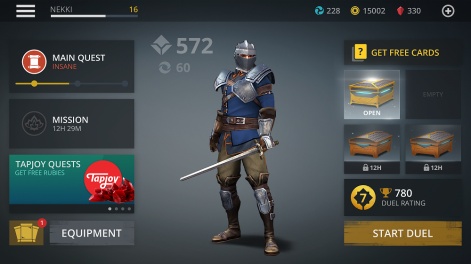
Finally, the release date was met. The game still had a lot of minor faults and edges, but in general we managed to realise almost everything we had planned. After the release, the game has become more and more precise and polished every day. And there will be a new chapter of the plot and new game modes released around every two months.
To sum it up
And so, despite all the difficulties, we have successfully launched our most ambitious project. We invested a lot in it, and, I think it’s not exaggerated to say, were able to create our dream game.
What’s more, we have grown into a strong team, brought our technology to a new level and set a very high quality standard. Now, new perspectives open up in front of us that we have already been dreaming of for a long time: to enter the console market. We plan to bring SF3 to Playstation, Xbox and Switch, add the long-awaited multiplayer fight mode, and even slightly touch upon esports.

